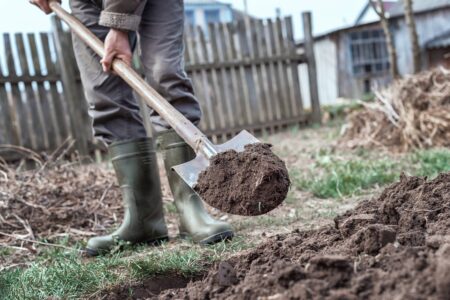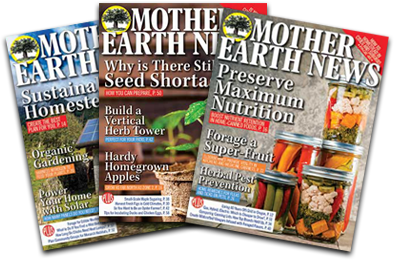Learn how to use cow manure for garden endeavors to create a mat that suppresses weeds (such as for bindweed control), fertilizes, and conserves water in your garden. This approach also contributes to improved soil structure, soil amendment, and long-term soil improvement.
When we moved to our new farm five years ago, my husband, Billy, and I were thrilled to have rich, dark, volcanic soil after years of fighting to grow food and flowers in the sand and rocks of our former property. One of the first things I did in the spring after we moved here was to till a 1/4-acre garden.
Seeing that large, clean area of dark, loamy soil made me anticipate a huge crop of berries and vegetables. The soil was so soft that I could just move it aside with my bare hands and cover the stressed roots of a bare-root strawberry plant. Within days, that same stressed plant would burst into life and erupt with green leaves, promising juicy strawberries in the years ahead.
Garden Problems Arise: Bindweed Control
As with most things in life, good things come with a price. The environment we created in our tilled garden favored a weed that was destined to become my nemesis: morning glories (also known as “field bindweed,” Convolvulus arvensis). By tilling the soil, I had unknowingly broken up a network of morning glory runners.
Each of these runners, when masticated by the tiller, became a vibrant and greedy new morning glory, ready to quickly cover my strawberry plants with myriad vines. Like Hercules fighting the Hydra, every time I tried to pull a vine for bindweed control, it would break off deep in the soil and respond by sending up even more.
The county tree trimmers kindly left us a large quantity of wood chips, and I surrounded each strawberry plant with a deep layer of them. The strawberry plants looked so neat and proper surrounded by clean, uniform wood chips, but it was an illusion.
Within days of being covered, the morning glories were poking their heads through the chips, and while it was satisfying to pull out long ropes of morning glory runners, I realized that I was fighting a losing battle with bindweed control. Those runners were intertwined with the strawberry roots, and there was no way to get them all.

Solution: Cow Manure for Garden
Then, one day, I had an experience of garden serendipity while looking at a dried manure patty left by my milk cow, Kalindi. Cow patties crust over within days of being deposited, and nothing grows through them. If you lift one up, it’s dry and brittle, but always moist underneath.
Additionally, any grass or weed growing on the verge of the patty is always more lush and green than the rest of the field, indicating that the plants near the patty benefit from its presence. The nutrient contents of the patty was supplying essential nutrients for plant growth.
I suspected that I could use cow patties as a mulch, and the mulch would probably be impenetrable to morning glories, creating a solution with cow manure for garden weed suppression and bindweed control. The challenge would be to minimize cracks where the morning glories could escape their underground prison.
Billy has a background in construction, and I’ve helped him with several concrete projects. Concrete is very hard, but not really strong, being quite brittle. The strength in a slab, countertop, or foundation is actually the metal rebar or wire mesh that’s surrounded by the concrete.
Keeping this in mind, I decided to make “patty mats” using a grass or straw mesh slathered with a slurry made out of cow manure. This simple Cow manure composting method essentially mimics Agricultural composting techniques while offering additional weed suppression benefits. The mesh gives the mat enough strength to minimize cracking.

The method that seems to work best for me is to cover the area that I want to mat with a thatch of about 3 inches of loosely packed old hay. I then fill my manure cart with as many fresh cow pies as I can comfortably pull to where I want to spread it. This fresh cow manure fertilizer provides a slow release fertilizer effect as it decomposes gradually.
Stirring with a hoe, I then add enough water to make a spreadable slurry. Once it’s workable, it’s just a matter of shoveling it over the thatch and working it in. I’ve tried using garden tools to work the slurry into the thatch but have found that using my feet is fastest and easiest.
My Muck boots, which have rounded soles and very little tread, work perfectly for this job. Ideally, I try to get at least the top inch of thatch saturated with the slurry, and then leave it to cure. The glossy, wet mat will turn a darker color within an hour, and by the next day it will have assumed the color and dull texture of cardboard.
Using the patty mats, I’ve finally gained the upper hand on the morning glories. Weeding is minimal, and I simply mow the morning glories that escape from the edges of mats. There’s an additional benefit, too: I don’t have to water the garden even once, and some of my cauliflowers are tasty monsters. I’ve also begun using the dried patties to mulch around trees, and in any newly potted seeds. This contributes to Seed Development and long-term plant growth promotion. It’s become clear that these patties double as high-quality fertilizer when broken down in compost piles over time.
FAQ: Cow Manure for Gardening and Farming
- Is cow manure safe to use directly on plants?
Raw cow manure can be too “hot” (high in ammonia and pathogens) for direct application and may burn plants. It’s best to compost it first to stabilize nutrients and reduce harmful microbes. As stated in the article, using it as a mulch can be a great way to stop weeds and gradually improve soil structure and soil quality through organic fertilizer effects. - How long should cow manure be composted before use?
Manure should be composted for at least 3 to 6 months to reduce pathogens and allow decomposition. Well-aged compost will have an earthy smell and crumbly texture. This composting process enhances slow-release nutrients and reduces risk to young seedlings. - Does cow manure smell bad?
Fresh manure has a strong odor. Composting greatly reduces the smell. Properly composted cow manure has a mild, earthy scent and makes for an ideal soil amendment and organic waste recycler. - How much cow manure should I use in my garden?
Apply about 40 pounds of composted cow manure per 100 square feet. Over-application may lead to nutrient runoff or imbalances, but balanced use provides essential nutrients and improves soil improvement goals over time.
Learn more about the benefits of your animals’ manure in Greenhouse Chicken Coop.







